Last Chance to Catch NYC's Holiday Notalgia Train
We met the voices of the NYC subway on our nostalgia ride this weekend!


New York City has its hidden alleys, Paris its passages, and Sydney its laneways. But Lyon, France has something even more astonishing perhaps–the traboules. These medieval/Renaissance architectural gems hidden behind closed doors are part passageway, part tower, part courtyard. Predominantly located in Vieux Lyon (old Lyon), the Croix-Rousse, a hillside area that dates back to the Roman period, and the Presqu’île neighborhoods, traboules are examples of urban architecture that are both functional and symbolic. The official number of traboules in Lyon, a UNESCO World Heritage site, vary from 230, as specified on Lyon Traboules to 500.
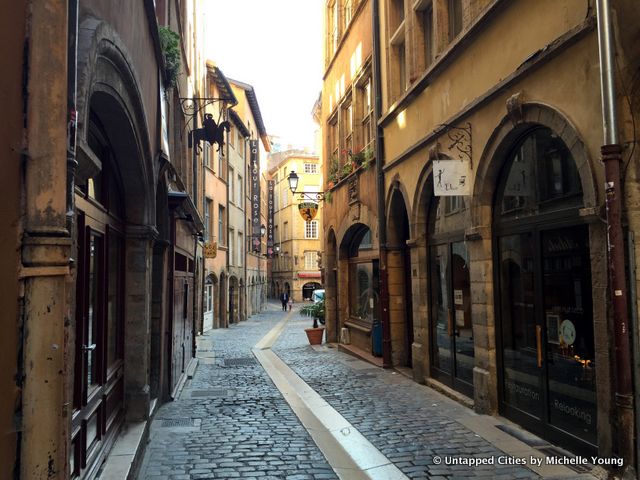
The origin of the traboules is functional. Like many medieval cities, the street plan evolved organically, resulting in a lack of connecting streets perpendicular to the river. Possibly as early as the 4th century, passageways were built to connect residents to the river, which was their main water supply. During the Renaissance, silk workers used traboules in the Croix-Rousse to transit quickly between their workshops and the merchants along the river. The traboules were also used by the Resistance during World War II, providing a strategic advantage in preventing complete German takeover in this area.
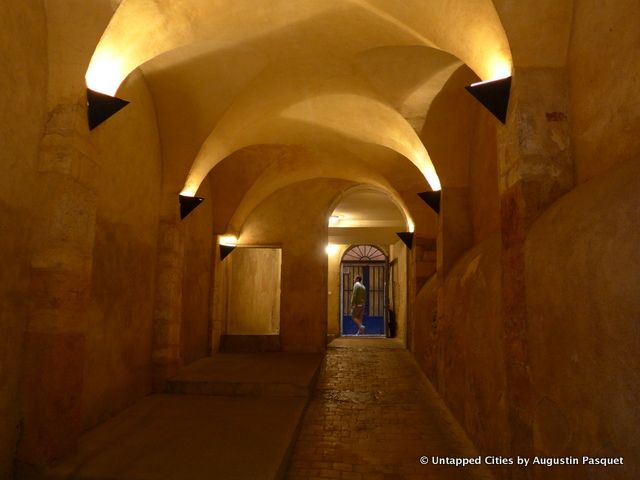
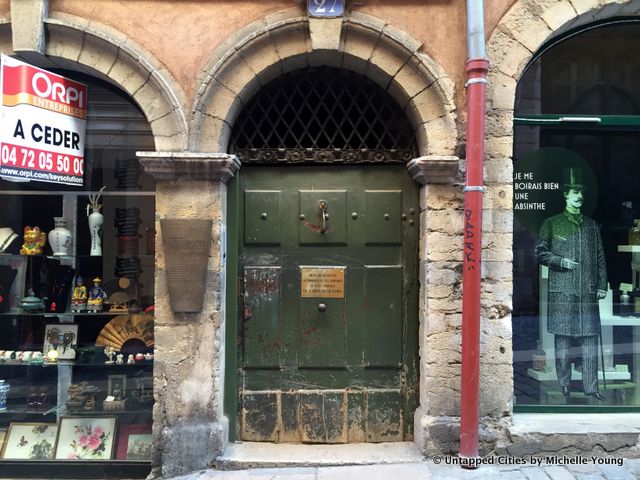
But if you have the chance to visit the traboules with a Lyonnais, you’ll discover the social layer to the passageways. Our contact in Lyon explained that though Lyon is, and traditionally, has been a wealthy city, it does not like to flaunt this out in the open. The hidden architecture of the traboules enabled families and other patrons to express affluence in a more veiled way, keeping the exterior facade of the buildings understated. As further evidence of the eminence of the traboules, some both a “noble entrance” and a servants entrance.
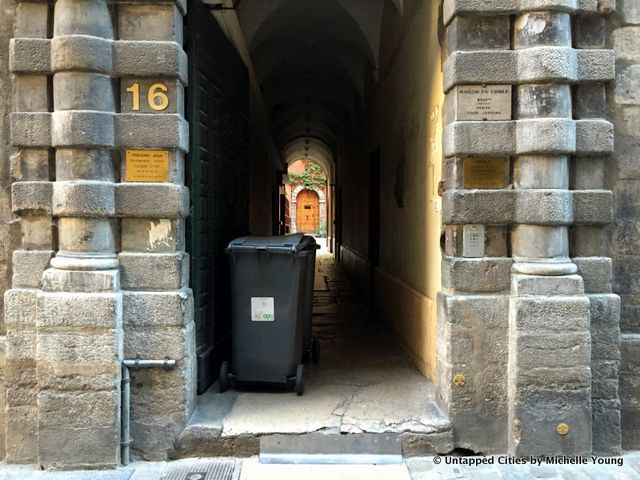
Entrance to Traboule “Maison du Crible – Tour Rose”, 16 rue du Bœuf in Saint Jean district
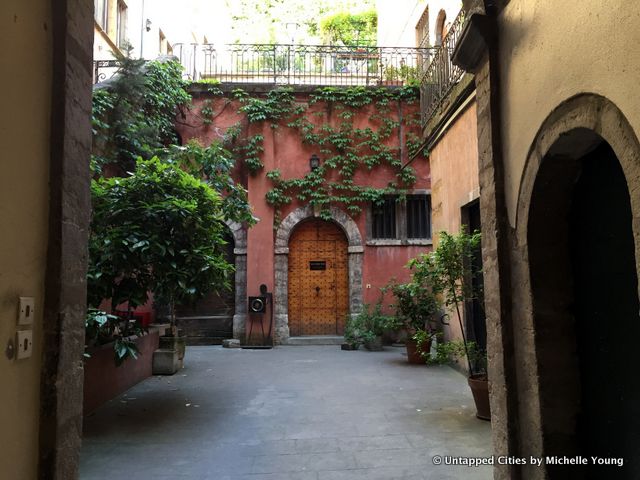
Traboule “Maison du Crible – Tour Rose” with Roman style traboule with patio
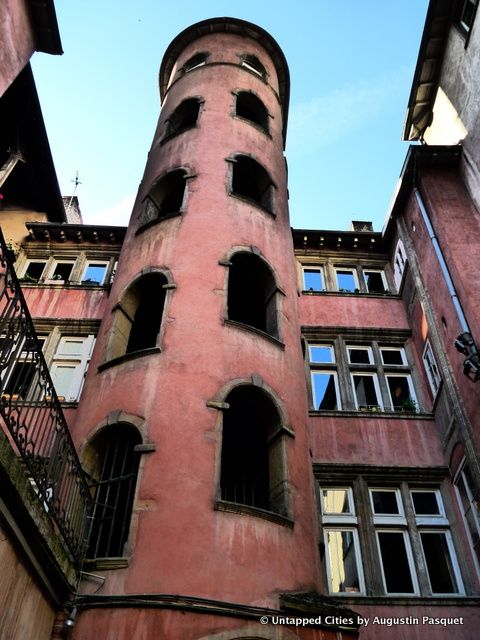
Pink Tower of Traboule Maison du Crible
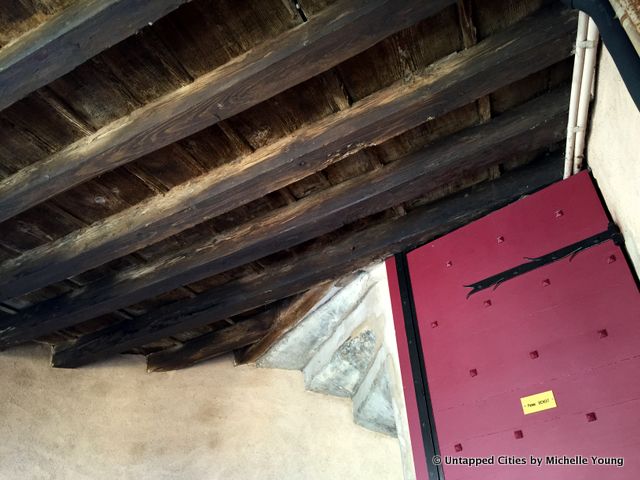
Top of the tower of Traboule “Maison du Crible – Tour Rose”
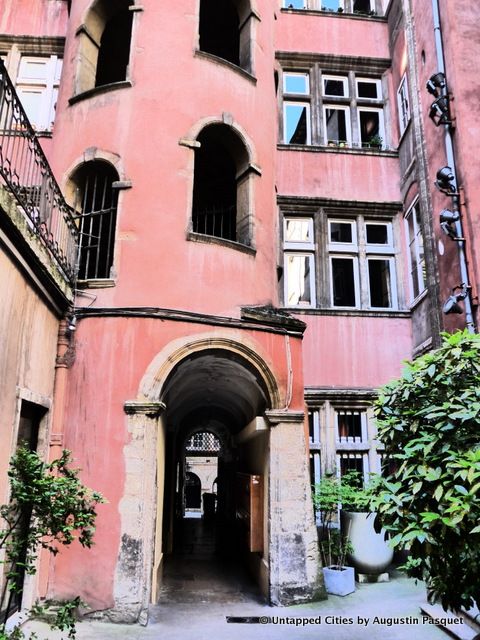
Bottom of the tower of Traboule “Maison du Crible – Tour Rose”
Indeed, visiting with a Lyonnais is your best bet. First, to be a true Lyonnais, (un vrai Lyonnais) it usually indicates a knowledge of the traboules. Second, they’ll know better the hours and possibly the door codes to get in to the more inaccessible traboules, although many do have historic markers. The good news is that although the traboules are now situated beneath private apartments, many are open to the public in the mornings through an agreement with the city–simply push the closed door during the right hours (or in some cases, the door may already be propped open with a garbage can). In fact, the city of Lyon contributes to the maintenance, lighting and restoration work of the traboules in exchange for open access.
See below for more photographs of the traboules of Lyon:
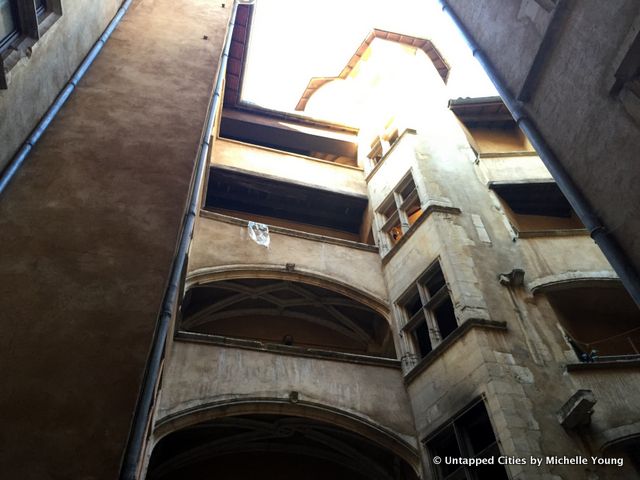
Traboule “Les deux Cours”, 28 rue Saint-Jean
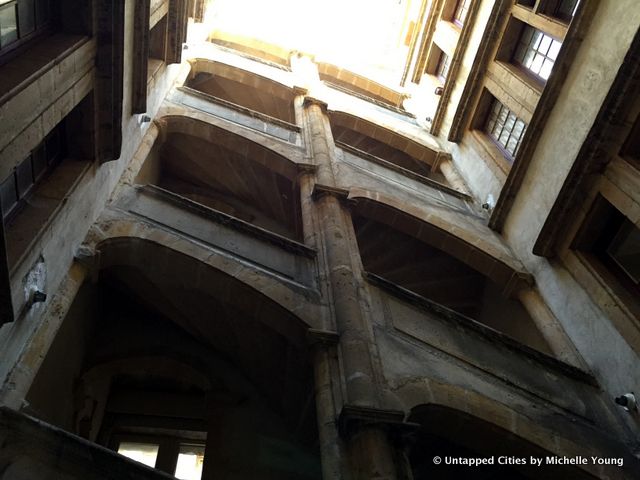
A traboule with a winding, semi-circular staircase
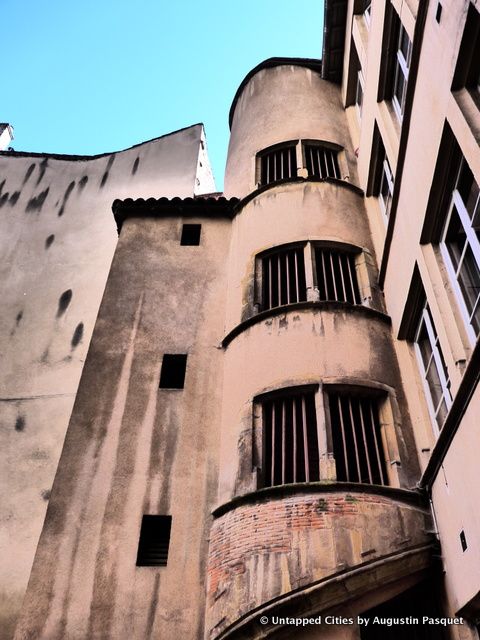
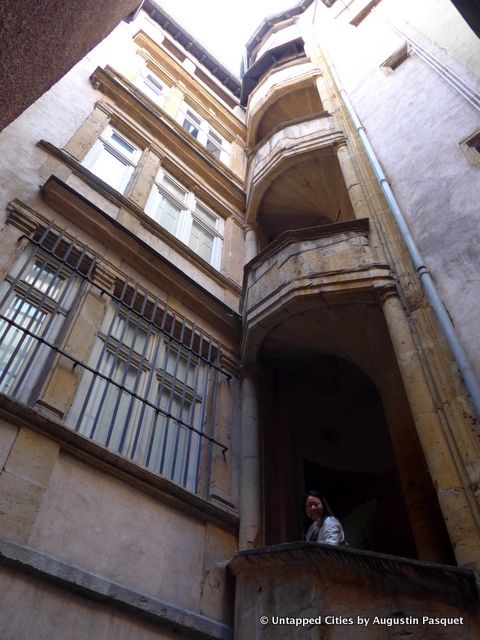
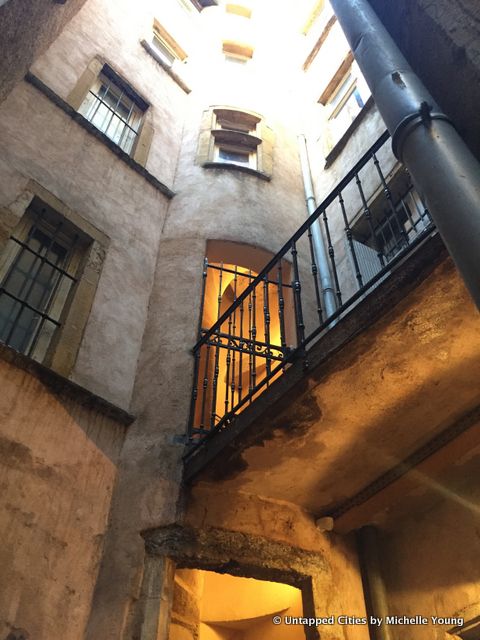
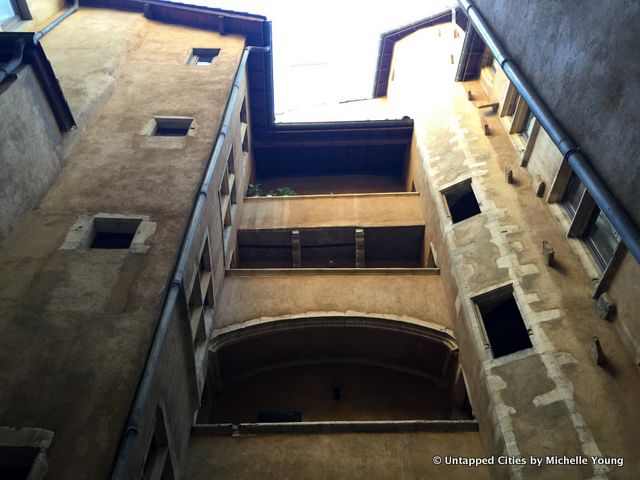
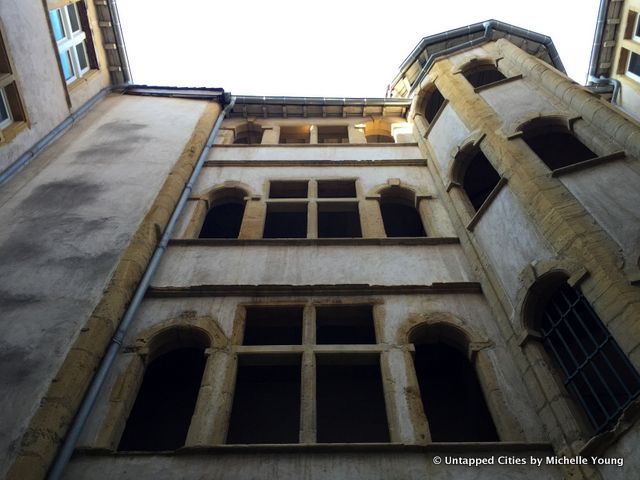
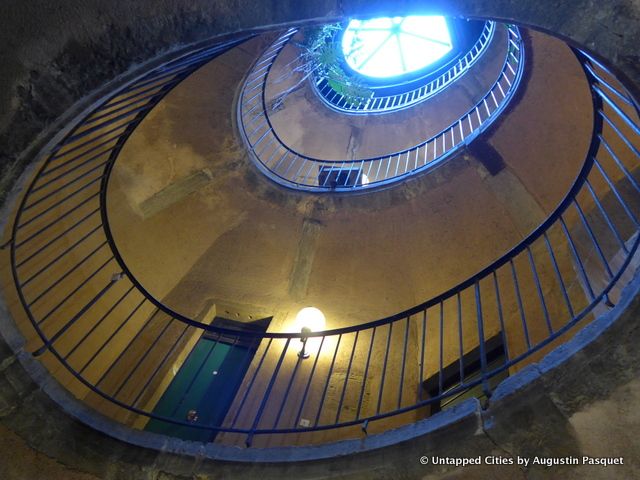
Next explore the covered arcades of Paris or the hidden alleyways of Greenwich Village, NYC. Get in touch with the author @untappedmich.
Subscribe to our newsletter